Viewing: Blog Posts from All 1564 Blogs, Most Recent at Top [Help]
Results 17,301 - 17,325 of 664,870Blog: Mattias (Login to Add to MyJacketFlap)
JacketFlap tags: Add a tag
Blog: Jump Into A Book (Login to Add to MyJacketFlap)
JacketFlap tags: Multicultural Books for Kids, Something To Do Book Review, Malala Yousafzai, Capstone Young Readers, Multicultural Children's Book Day, Add a tag
It’s nearly time, yes ….it’s nearly time for Multicultural Children’s Book Day on January 27th!
We’ll be having a huge and ginormous celebration which I’ll tell you a little more about later. We wouldn’t be able to share in the joy of diverse and multicultural books and publishing if it weren’t for our generous sponsors. I have the extreme pleasure of introducing Capstone Young Readers with you who is one of our Silver Sponsors this year.
There has been a young woman who has greatly inspired me over the past few years. Her name is Malala. Though much has been written about her over the past several years, it has usually been for the young adult to adult audiences given the nature and violence of her story.
Capstone Young Readers has published the most beautiful book called For the Right to Learn: Malala Yousafzai’s Story written by Rebecca Langston-George and illustrated by Janna Bock. The words and deeply colorful illustrations work together in concert to tell the story of a young teenage girl whose courage has become legendary.
“One Child, one teacher, one book, and one pen can change the world. ” -Malala Yousafzai
For the Right to Learn tells the story to young readers in a non-violent way that engages them into constructive conversations and inspires them to take action.
Malala lived in the Swat Valley in Pakistan which is right on the border of Afghanistan. One day the Taliban moved into the Swat Valley and her little city and forced their ideas on the people living there.
As time progressed the Taliban became more severe. They grew stronger every day using violence and intimidation. As their strength grew they announced that girls could not go to school. Malala loved school . Her father was a principle of a school and Malala loved to learn more than anything else. This was devastating news for her. The Taliban said that girls who attended school actually brought shame to their families.
Malala and her father became very vocal against the Taliban and their rules. They were brave and not frightened. In December 2008 came the news that All girls schools would be closed and starting January 15th no girls would be allowed in any schools. Then the Taliban started raining bombs down on the villages and cities destroying all schools within sight.
But bombs could not silence Malala. The British Broadcasting Corporation wanted to know what life was like for a girl in Pakistan in the Swat Valley. Malala took a pen name, Gul Makai and would read her blog post to the BBC reporter over the phone over the following two months. It first appeared in Urdu and then was translated into English. Her blog became very popular as she and her family continued to speak out against the Taliban. They created such an uprising that the Taliban agreed to let girls 10 years old and younger go to school. Malala was 11. So older girls wore the clothes of younger girls, hid their books under their shawls and snuck their way to school. Anyone caught would be killed on sight.
After much fighting, a stint in a refugee camp, Malala and her family returned home thinking the Taliban were gone. Malala had become very famous at this point and even the Bishop Desmond Tutu had nominated her for a Nobel Peace Prize. Malala returned to school and soon discovered that the Taliban were not gone. One day while riding a school bus, the Taliban entered and shot Malala in the head and two of her friends. All of them survived but Malala had a very long road to recovery.
Nearly on the verge of dying, Malala was flown out of Pakistan to Birmingham England where she has recovered fully from her attack and lives to this day with her family.
Malala however, has taken her attack by the Taliban and has come thru it and continued it forward to start a global movement for girl’s education. She and her father continue to speak about education. She has started a fund called the Malala Fund which gives money to fund education in Pakistan and other third world countries.
She is the winner of the Nobel Peace Prize and is a role model for all of us regardless of age that one voice with action can make all the difference in the world. She promises to continue to work toward “peace in every home” and “education for every boy and every girl in the world.”
For the Right to Learn is a story which inspires us all to be brave. I firmly believe that along with the best stories written our bookshelves need to be filled with the real life stories of those who are remarkable and extraordinary. This book qualifies as such.
Something To Do
31 million primary school aged girls are not going to school currently in the world. 32 million more girls are missing out on secondary education. In total more than 60 million girls world wide are out of school today.
When we educate a woman she ends up helping 5 or more people in her family. When we educate girls they grow into the matriarchs who not only raise a family but support a community and a region. Education for girls is one of the more important task for our planet currently along with food and clean water.
Writing Your Name:
Certain things we take for granted such as our names. Can you imagine if you didn’t know what your name looked like written down or not even be able to write your name ? How do you prove you exist if you can’t read or write your name ?
I remember growing up one of those red letter moments was when I learned to write my name. I shared in that memory and joy once again which each one of my children in turn learned to write their names.
Taking beautiful colors, and paper, maybe even some glitter, write your name beautifully and celebrate the fact that you can.
If you should happen to sponsor a child from another country, make a beautiful poster or picture of just their name and send it to them.
The Malala Fund
Inspired by co-founders Malala and Ziauddin Yousafzai, Malala Fund’s goal is to enable girls to complete 12 years of safe, quality education so that they can achieve their potential and be positive change-makers in their families and communities. We work with partners all over the world helping to empower girls and amplify their voices; we invest in local education leaders and programmes; and we advocate for more resources for education and safe schools for every child.
Discussion Questions:
- Who is Malala and Where is she from ?
- What was Malala fighting for the right to do ?
- Her desire to go to school nearly cost Malala her life. Why do you think she took the risk ?
- Should everyone have the right to go to school ?
- Do you think children should be protected ?
- What right and protections do you think children everywhere should have ? Make a list.
- Discover and discuss in what ways children around the world are sometimes denied those rights.
- Would you be able to do what Malala did ?
- What can we do about it. Look at Malala’s example. Just one young girl, one voice, and a pen has changed the world. What are you willing to do ? What small thing can you contribute something to change the world. What will you say with your one voice?
10 Lessons to be Learned from Malala
This is an excerpt of an article from the Canadian Huffington Post
1. Never hesitate to raise your voice.
This message rings out loud and clear from the 16 year old humanitarian. If you don’t raise your voice, it is unlikely that anyone will hear you. And I bet you have something (or many things) to say. Share your thoughts, ideas and passions with the world.
2. Dare to dream, and let your dreams drive your actions.
Never think for a moment that any dream is too large, or too unrealistic. My friend Adam Braun says “the single most powerful element of youth is our inability to know what’s impossible.” I couldn’t agree more. Here’s my challenge to youth: don’t lose that admirable quality as you transition into adulthood.
3. Don’t hate or seek revenge.
Malala was shot on her way home from school. The Taliban gunmen attempted to kill her, and revenge is the last thing on Malala’s mind. Since I was a little kid, my mom has always said that hating is just a waste of energy. It doesn’t benefit anyone and it’s a waste of time.
4. Never give up.
For the love of all that’s good in this world, please never give up. If you care about something, or someone, no matter what happens, refuse to quit! Never give up, and seek motivation to fuel your drive. If anyone can do it, you can. Surround yourself with people and messaging that keep you going, and encourage you to never give up or lose hope.
5. Be compassionate.
If hating is the worst way to exert your energy, love is the best way to use your energy. The more you give, the more you get. Be compassionate. Tell those you love that you love them.
6. Be humble.
July 12 was declared Malala Day by the United Nations. This past summer, Malala spoke at the UN headquarters and opened with this: “Malala Day is not my day. Today is the day of every woman, every boy and every girl who have raised their voice for their rights. There are hundreds of human rights activists and social workers who are not only speaking for human rights, but who are struggling to achieve their goals of education, peace and equality. Thousands of people have been killed by the terrorists and millions have been injured. I am just one of them.”
7. Always be thankful.
Don’t take anything for granted. Your life. Your family. Your home. Your pencil. There’s a lot to be thankful for. Try your best not to complain about the things you may not have, and instead be thankful for all that you have, and all that you are.
8. Strive to help others.
I have a secret for you. The more good deeds you do, the better you will feel yourself. So in fact, helping others may turn into quite a selfish activity if you do it right. Before you know it, you will be stuck in a cycle of helping others, and feeling good, and helping others more, and feeling even better… Don’t believe me? Try it. I dare you.
9. Replace weakness with strength, and fear with courage.
This may appear to be one of those things that is easier said than done, but sometimes it’s just a matter of perspective. Don’t let negativity shut you down. Strive to be the strongest, best, most positive person you can be. The things you can accomplish are mind boggling!
10. Never doubt your ability to impact the world.
We live in a world of over 7-billion individuals. Each person is different. Each person on earth has something unique to offer the world. What’s your gift? What wonderful things do you have to offer? Don’t ever doubt for a second the power you have to make a difference.
Nobel Peace Prize Winner
Malala won the Nobel Peace Prize for what she endured and how she made that tragedy into a movement to help others.
Investigate and discover about the Nobel Peace Prize and past winners and then have a look at an excerpt of Malala’s acceptance speech.
A Great Video to Watch
There is a wonderful documentary called He Called Me Malala. It is beautifully done and tells the story with out alarming and disturbing video. It is a great resource to use along with For the Right To Learn. You can find it on Netflix and Amazon.
What do you admire most about Malala?
Bookjumper Pinterest Board
Discover even MORE Jump Into A Book Booklists and their companion activities by visiting and following my Pinterest Board!
Follow Valarie Budayr @Jump into a Book’s board Jump Into a Book Kidlit Booklists on Pinterest.
The post What Would You Do For The Right To Learn? Malala Yousafzai’s Story appeared first on Jump Into A Book.
Add a CommentBlog: Milk and Cookies: Comfort Reading (Login to Add to MyJacketFlap)
JacketFlap tags: added to the list, Add a tag
Over the past week I have picked up and been sent a lot of new books, it's been exciting. Here are my first impressions of the ones I was sent and the reasons I checked out the ones I did.
Jacob Have I Loved: I am working on filling some gaps in my reading of YA/MG "classics." This one has been on my list for a long time so I grabbed it off my library shelves and am going to read it next month.
Henry Cicada's Extraordinary Elktonium Escapade: This one was a surprise mailing from HarperCollins (thanks!) Haven't heard much about it but the cover is darling and it looks like it would be a fun read. If I don't get around to reading it, I will put it in my collection and have a few of my middle schoolers read it.
Finnikin of the Rock: I told my partner librarian to read this over the summer because I had always heard good things about it and she loved it. We have since bought the whole trilogy and several other teachers have read them as well. I don't want to be left behind so I pulled this one off to read this winter.
Sweet Home Alaska: I am reading this one for a blog tour. I was so excited to be asked to be a part of this because this book was one I was really looking forward to reading!
The Treasure of Maria Mamoun: This looks like such a fun adventure/mystery for middle schoolers.
The Secret Sea: I really enjoyed Barry Lyga's Jasper Dent series so I was excited to get this one. Looks like a suspenseful and intriguing read.
All the Feels: Love those teen contemporary romance type books. This looks like it will be a fun read about a girl who is a fangirl whose favorite character in a movie series dies.
A Week of Mondays: This one caught my eye when it was described as a Groundhog Day for teenagers.
Dr. Critchlore's School for Minions Book Two: Gorilla Tactics: I am not sure why the first book in this series was never on my radar, but these look so cute! I put them both on the most recent order for my library!
Welcome to Night Vale: This is one of my favorite podcasts! So excited for this book to enrich the story of Night Vale. Checked it out from my public library.
What have you gotten recently?
Blog: PW -The Beat (Login to Add to MyJacketFlap)
JacketFlap tags: Top News, guardians of the galaxy, Marvel Cinematic Universe, MCU, Guardians of the Galaxy 2, Ego the Living Planet, Movies, Marvel, Breaking News, Add a tag
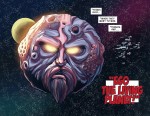 Geek.com has an exclusive rumor: Sources close to both Geek.com and production on the film have told us that a fan favorite from the comic books will be making an appearance in the upcoming film: Ego, the Living Planet, is set to appear in Guardians of the Galaxy 2. I’m not surprised. Why? Because I […]
Geek.com has an exclusive rumor: Sources close to both Geek.com and production on the film have told us that a fan favorite from the comic books will be making an appearance in the upcoming film: Ego, the Living Planet, is set to appear in Guardians of the Galaxy 2. I’m not surprised. Why? Because I […]
Blog: Galley Cat (Mediabistro) (Login to Add to MyJacketFlap)
JacketFlap tags: E. H. Shepard, People, Digital, A.A. Milne, Add a tag
 Have you ever imagined E. H. Shepard, the illustrator behind A. A. Milne’s Winnie-the-Pooh series, drawing his own version of Star Wars? James Hance, an artist, has tackled this challenge.
Have you ever imagined E. H. Shepard, the illustrator behind A. A. Milne’s Winnie-the-Pooh series, drawing his own version of Star Wars? James Hance, an artist, has tackled this challenge.
According to Bored Panda, “Hance’s illustrations reimagine Chewbacca as Pooh Bear and Eeyore as an Imperial Walker.” Some of the pieces can be found for sale at Hance’s Etsy shop.
In addition to artwork, Hance has actually written and produced an audiobook entitled Wookie the Chew: The House at Chew Corner. Click here to download a free digital copy.
Add a Comment
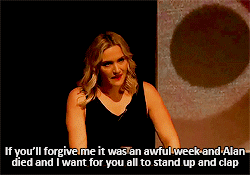
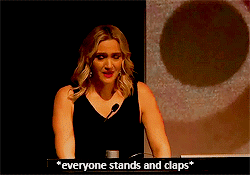


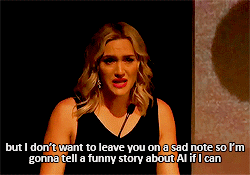
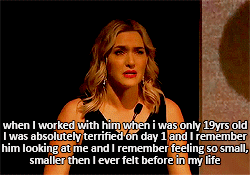

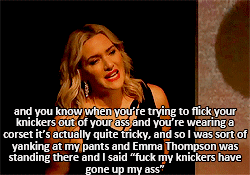

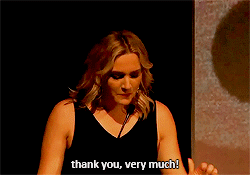
Kate Winslet tearfully remembering Alan Rickman at London Critics Awards (x)
That’s fucking amazing I love it
Blog: PW -The Beat (Login to Add to MyJacketFlap)
JacketFlap tags: Dan Slott, Top News, Silver Surfer, Top Comics, Marvel Rundown, Michele Fazekas, Tara Butters, Comics, Marvel, Breaking News, Publishers, Captain Marvel, Add a tag
 Last week, it happened. Marvel finally ended the event that kicked off their line-wide All-New All-Different relaunch when they released Secret Wars #9. We had an in-depth review on the comic, but will be continuing our Marvel review series under a familiar moniker; The Marvel Rundown. We took out those annoying adjectives, but will continue to […]
Last week, it happened. Marvel finally ended the event that kicked off their line-wide All-New All-Different relaunch when they released Secret Wars #9. We had an in-depth review on the comic, but will be continuing our Marvel review series under a familiar moniker; The Marvel Rundown. We took out those annoying adjectives, but will continue to […]
Blog: The Leaky Cauldron (Login to Add to MyJacketFlap)
JacketFlap tags: News, Watson, Add a tag
Forbes has introduced a new list of influential people, the inaugural 30 Under 30 Europe List. The list includes 300 people under the age of 30, divided into ten categories of 30, that are “leaders, creative inventors, and brash entrepreneurs.”
Emma Watson made the list of 30 entertainers. The category picked it’s 30 Under 30 by “watching young impresarios work their craft on the court and the silver screen.” Emma was nominated for both her work in film, and her work as the United Nations Women Goodwill Ambassador for gender equality. Forbes describes why Emma made the list, saying:
Emma Watson, 25
Actor
(United Kingdom) Arguably the most successful graduate of Hogwarts, Watson has starred in both big budget movies (“Noah”) and indie fare (“Colonia”). A United Nations Women Goodwill Ambassador since 2014, Watson’s advocacy on behalf of the HeForShe campaign makes her an important spokesperson for gender equality.
The entire list and all of its nominees may be seen here.
Add a Comment
Blog: Galley Cat (Mediabistro) (Login to Add to MyJacketFlap)
JacketFlap tags: Alex Gibney, Authors, Michael Pollan, Add a tag
 Michael Pollan, an author known for his food writing, and filmmaker Alex Gibney, a filmmaker, have partnered together to create a new Netflix series called Cooked. Eater reports that the four episodes of this food documentary series will air on Feb. 19.
Michael Pollan, an author known for his food writing, and filmmaker Alex Gibney, a filmmaker, have partnered together to create a new Netflix series called Cooked. Eater reports that the four episodes of this food documentary series will air on Feb. 19.
According to Tasting Table, the title of the show shares the same name as Pollan’s 2013 nonfiction book. Each installment will focus on a different element which include fire, water, air and earth.
Here’s more from Variety: “In each segment, Pollan returns to his kitchen in Berkeley, Calif., to deliver his core message that cooking our own meals is the single best thing we can do to take charge of our health and well being…Personalities and places featured in “Cooked” include an Aboriginal tribe in Western Australia that fire-roasts monitor lizards; a Connecticut Benedictine nun and microbiologist who makes traditional French cheese; Peruvian brewers who use human saliva to ferment a traditional beverage; and an ancient Moroccan granary powered by rivers.” (Photo Credit: Alia Malley)
Add a Comment
Blog: PW -The Beat (Login to Add to MyJacketFlap)
JacketFlap tags: Movies, Star Wars, betrayal, Add a tag
Yesterday it was announced that the next, as yet unnamed Star Wars movie, Episode VIII, will be pushed back from Summer 2017 to Christmas 2017. This set off a rescheduling frenzy among studios with Spider-Man, Terminator, Pirates of the Caribbean and Jumanji all getting moved around. I wasn’t a bit surprised at the move: 18 […]
Blog: The Leaky Cauldron (Login to Add to MyJacketFlap)
JacketFlap tags: News, Theme Park, Add a tag
Trip Advisor and Universal are hosting a Wizarding World Sweepstakes called “The Ultimate Harry Potter™ Trip Around The World.”
One grand prize winner will have the chance to visit all of the Wizarding World theme parks (starting at the grand opening of the Hollywood location, then unto Orlando and Japan) and end their adventure at Warner Bros. Leavesden Studio Tour: The Making of Harry Potter.
Fans may register for a chance to win this sweepstakes on the Trip Advisor website, here. Good Luck!
Add a CommentBlog: PW -The Beat (Login to Add to MyJacketFlap)
JacketFlap tags: David Aja, eric stephenson, peter bagger, Conventions, sad things, Kibbles 'n' Bits, Jack Kirby, the smithsonian, Add a tag
 § Nice art: David Aja’s variant cover for Miracleman: The Silver Age #3 § Image Publisher Eric Stephenson did the interview rounds this week for the return of Nowhere Men and the one at AV Club has perhaps the most inside Image info, like this on how pitches are accepted: AVC: When you’re pitched a […]
§ Nice art: David Aja’s variant cover for Miracleman: The Silver Age #3 § Image Publisher Eric Stephenson did the interview rounds this week for the return of Nowhere Men and the one at AV Club has perhaps the most inside Image info, like this on how pitches are accepted: AVC: When you’re pitched a […]
Blog: The Chicago Blog (Login to Add to MyJacketFlap)
JacketFlap tags: Film and Media, History, Author Essays, Interviews, and Excerpts, Publicity, Add a tag
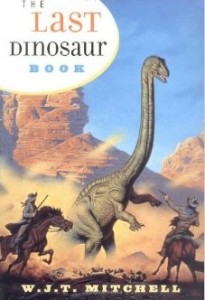
From WJT Mitchell’s review of Pixar’s The Good Dinosaur, live at the LA Review of Books:
The Pet Collector reminds us of the most fundamental role of language: the ability to name things, and by doing so, to make them belong to us, and we to them. (The naming of and “dominion over” animals are central to Adam’s role in the Garden of Eden.) But the Collector doesn’t just take possession of his adopted family of animals; in his excessive abundance of attachments, he is clearly also possessed, and appears to be a fearful hoarder of living things. Arlo, by contrast, only needs his one companion, Spot, and he is comfortable with letting Spot go when he finds a human family to join at the conclusion of the film.
All this reeks of what anthropologists used to call totemism, the adoption of natural things (animals and plants) as kinfolk and symbols of kinship in so-called primitive cultures. The problem is that dinosaurs were unknown to primitive cultures; they are a thoroughly modern discovery, never named, classified, or adopted until the British paleontologist Richard Owen proclaimed their existence in 1843. Could it be that modern cultures need totemism too? Freud’s Totem and Taboo argued that totemism was obsolete in the modern world, while taboos still abound. But he failed to consider the possibility of a distinctively modern totemism, in which the animal counterpart and companion to the human species is an extinct family of prehistoric animals discoverable only by modern science. Dinosaurs provide the perfect Darwinian allegory for the human race — namely, the possible (or should we say highly probable) prospect that human beings could wind up just like them — extinct. That, it seems to me, is the best explanation of the strange array of contradictory attitudes toward dinosaurs as popular icons. They are friends and companions, on the one hand, and feared enemies, on the other. They are ferocious wild animals and domestic pets, vicious predators and peaceful vegetarians. In short, they are a mirror of all the varieties of our own human species, distributed across a genus of extinct animals that exist only in the realms of unbridled imagination and biological science — a perfectly modern combination.
To read the review in full at LARB, click here.
For more information about Mitchell’s The Last Dinosaur, click here.
Add a Comment
Blog: Liz's Book Snuggery (Login to Add to MyJacketFlap)
JacketFlap tags: Uncategorized, Add a tag
Snowmen at Work
By Caralyn Buehner, pictures by Mark Buehner
If you are a Frostyphile or if you’re sympatico with snowmen, have I got the book for you this winter! And if you’re an I Spy fanatic who loves poring with your children over picture book pages looking for the hidden figures an illustrator has hidden carefully here and there, you’re in for a double treat in Snowmen at Work.
Husband wife team of Mark and Caralyn Buehner, New York Times Best Selling creators of Snowmen at Christmas and Snowmen at Night plus Snowmen All Year, have come up with a frozen host of hardworking ice men and women AND hidden a cat, mouse, T-Rex and rabbit in each picture. My husband had a laugh at my expense as he airily pointed out the four figures on each page. To lessen the frustration level, if you’re like me, the Buehners have kindly put a key to the lost rascals on the inside of the book jacket. It can come in mighty handy when the child you’re reading to, is finding everything and all you can say is, “Where is that?”
Now, back to those hardworking snowfolk. First of all, kids are in the know on these things. All snowmen come alive at night when we humans are fast asleep. Personally, I’ve been suspicious for years, as they never look quite the same the next morning after you’ve rolled them into shape on the front lawn. They’ve changed ever so slightly, and why not? According to Snowmen at Work, they’re a busy bunch with a host of jobs, same as we humans. Only difference is, they serve the snowperson community as snow removers, dentists who drill bits of coal to make a smile brighter, snow mechanics whose specialty of the day may include straightening the runners on a sled (while you wait), snow grocers who stock, why natch, frozen peas and Frosty Flakes and ice cream of course, snow pet stores where a snow pup may be had, snow teachers who teach snow kids to spell important words like REFRIGERATE and ANTARCTICA and even snow-librarians who eagerly read stories of brave snow knights fighting those scary dragons. There’s a whole bunch of snow people busy, busy, busy while we’re fast asleep in our beds and kids will revel in the cold, colorful, cuddly and even camouflaged ones in the picture that are happy in their work!
So next time you’re out at night, cast a glance at the truck delivering frozen foods to town. If the driver has a carrot nose and two eyes made out of coal, it’s only Snowmen at Work! My favorites are the frozen pizza delivery snowman who delivers and the firefighters who rescue snow cats stuck in trees. This book is magical and made for a read aloud!
Add a Comment
Blog: Storywraps-Wrap your mind and heart around a good story (Login to Add to MyJacketFlap)
JacketFlap tags: Add a tag
Do you have a little one in your family that is just on the cusp of reading? It is a very important milestone in his life, so how you approach it can make a lifelong difference in his attitude towards reading. Always make book sharing and reading aloud to each other a priority. Anytime and anyplace is always the best choice.
Curling up with a good book together with your child on your lap or snuggled close in beside you gives him a feeling of security and of this being a special time indeed. The love of reading flows as you engage in the book and the words flow between minds and hearts. This is a time that the adult in his life has put aside his/her very busy scheduled life and has chosen to spend quality time with an excellent book and that wonderful little person in his life.
These sessions should never be long or dragged out. Make them times of anticipation and just plain fun. When your budding reader is reading out loud and gets stuck on an unfamiliar word please don't have him sit there and try to sound it out over and over again. That can cause anxiety and frustration and a lack of self-confidence in his ability to read. Instead just gently give him the word and keep the flow of language and the ideas of the story going. So many times parents get hung up on this aspect and it is a losing tactic.
Reading time together should be a stress-free, let's-read-another book-together-time. I have compiled a list of books that are perfect for kids to enjoy and feel successful when conquering that printed word set before them.
THE EASIEST EASY READER BOOKS
Hug
Orange Pear Apple Bear
Up, Tall and High is another book with a very limited vocabulary. The book consists of three stories in which birds humorously contemplate three states of being (three guesses!). Fold out pages add extra interest and this book is also great for reading aloud to toddlers and preschoolers. Another good source is using Ethan Long’s Clara and Clem books from Penguin’s Young Reader series.
Cat the Cat, Who Is That?
EASY READER BOOKS – A SLIGHT STEP UP
See Me Run. Meisel has two “I Like to Read” about dogs going about their doggy business. Very simple words and lots of repetition made this a good choice. There is action, a bit of suspense (what will the dogs dig up?) and a lot of humor that keeps kids interested.
More so than most publishers, I find Harper-Collins’ “I Can Read” books at the “Shared My First Reading” level, the most reliable source of appropriately leveled books for emerging readers. They have great repetition and words that kids can actually sound out. After a few attempts at sounding out please just give your child the word.
Elephant & Piggie
Mittens series
What Will Fat Cat Sit On?
Do you have an emerging reader? What books do you find useful?
I truly hope that this has helped you with your new emerging bookworm. It is very important that a child not only acquire the skill of reading but also the love of reading. There are tons of fabulous books to chose from and always remember lean towards what your child is interested in while determining which book to get. May your day be filled with interesting, adventurous, fun words that are packed between the covers of a great storybook.
Blog: Pub(lishing) Crawl (Login to Add to MyJacketFlap)
JacketFlap tags: Interviews, Writing Life, Revision, Beth Revis, Across the Universe, Beginner Resources, The Body Electric, Writers Toolbox, PubCrawl Podcast, Paper Hearts, Add a tag

This week JJ talks with New York Times bestselling author Beth Revis about her publishing journey, revision, how she learned to revise and critique, and what she’s reading and enjoying!
 BETH REVIS is the New York Times bestselling author of the Across the Universe trilogy, as well as The Body Electric, Paper Hearts, and the forthcoming A World Without You. She lives in the Appalachian mountains with her boys: one husband, one son, and two very large dogs. You can find out more on Facebook, Twitter, or online. If you never want to miss a thing and also get exclusive insider opportunities, sign up for her newsletter here.
BETH REVIS is the New York Times bestselling author of the Across the Universe trilogy, as well as The Body Electric, Paper Hearts, and the forthcoming A World Without You. She lives in the Appalachian mountains with her boys: one husband, one son, and two very large dogs. You can find out more on Facebook, Twitter, or online. If you never want to miss a thing and also get exclusive insider opportunities, sign up for her newsletter here.
Show Notes
- Our previous podcast episode about revision, as well as all the articles we’ve ever written about Revision on PubCrawl!
- The podcast episode where we discuss the vagaries of The New York Times bestselling lists
- Learn to revise by editing! Beth learned to revise by practice, and by critique other people’s work. JJ learned to revise by editing other people’s manuscripts.
- Creation vs. Discovery writers, or rethinking the Plotter vs. Pantser dynamic by JJ
Beth’s method of revision
- Approach your booze of choice.
- Make up a list of all the changes that need to be made.
- Take out all the compliments.
- Work chronologically through the manuscript.
- Beth uses the split screen function on Scrivener, with the old version on top and new on bottom.
- Go through the list of changes and work page by page.
What We’re Working On
- Beth is working on the last Paper Hearts book and the revisions for the forthcoming A World Without You
- JJ is working on her middle grade and waiting on cover concepts for Wintersong
What We’re Reading
- Challenger Deep by Neal Shusterman
- I Want My Hat Back by Jon Klassen
- Red Queen by Victoria Aveyard
- More Happy Than Not by Adam Silvera
- Silver in the Blood by Jessica Day George
- The Witches: Salem 1692 by Stacy Schiff (yep, still!)
- The Lions of Al-Rassan by Guy Gavriel Kay
Off Menu Recommendations
- Jessica Jones (TV show)
- Daredevil (TV show)
- Bojack Horseman (TV show)
- We Bare Bears (TV show)
- Steven Universe (TV show)
- Adventure Time (TV show)
Paper Hearts: Some Writing Advice
Your enemy is the blank page. When it comes to writing, there’s no wrong way to get words on paper. But it’s not always easy to make the ink flow. Paper Hearts: Some Writing Advice won’t make writing any simpler, but it may help spark your imagination and get your hands back on the keyboard.
Practical Advice Meets Real Experience
With information that takes you from common mistakes in grammar to detailed charts on story structure, Paper Hearts describes:
- How to Develop Character, Plot, and World
- What Common Advice You Should Ignore
- What Advice Actually Helps
- How to Develop a Novel
- The Basics of Grammar, Style, and Tone
- Four Practical Methods of Charting Story Structure
- How to Get Critiques and Revise Your Novel
- How to Deal with Failure
- And much more!
Enter for a giveaway of PAPER HEARTS: Some Writing Advice! Beth has generously donated a signed copy!
That’s all for this week! Next week we return to our regularly scheduled PubCrawl podcast posts and discuss X MEETS Y, or THE HIGH CONCEPT IDEA.
Blog: ComicBitsOnline.com (Login to Add to MyJacketFlap)
JacketFlap tags: Add a tag





























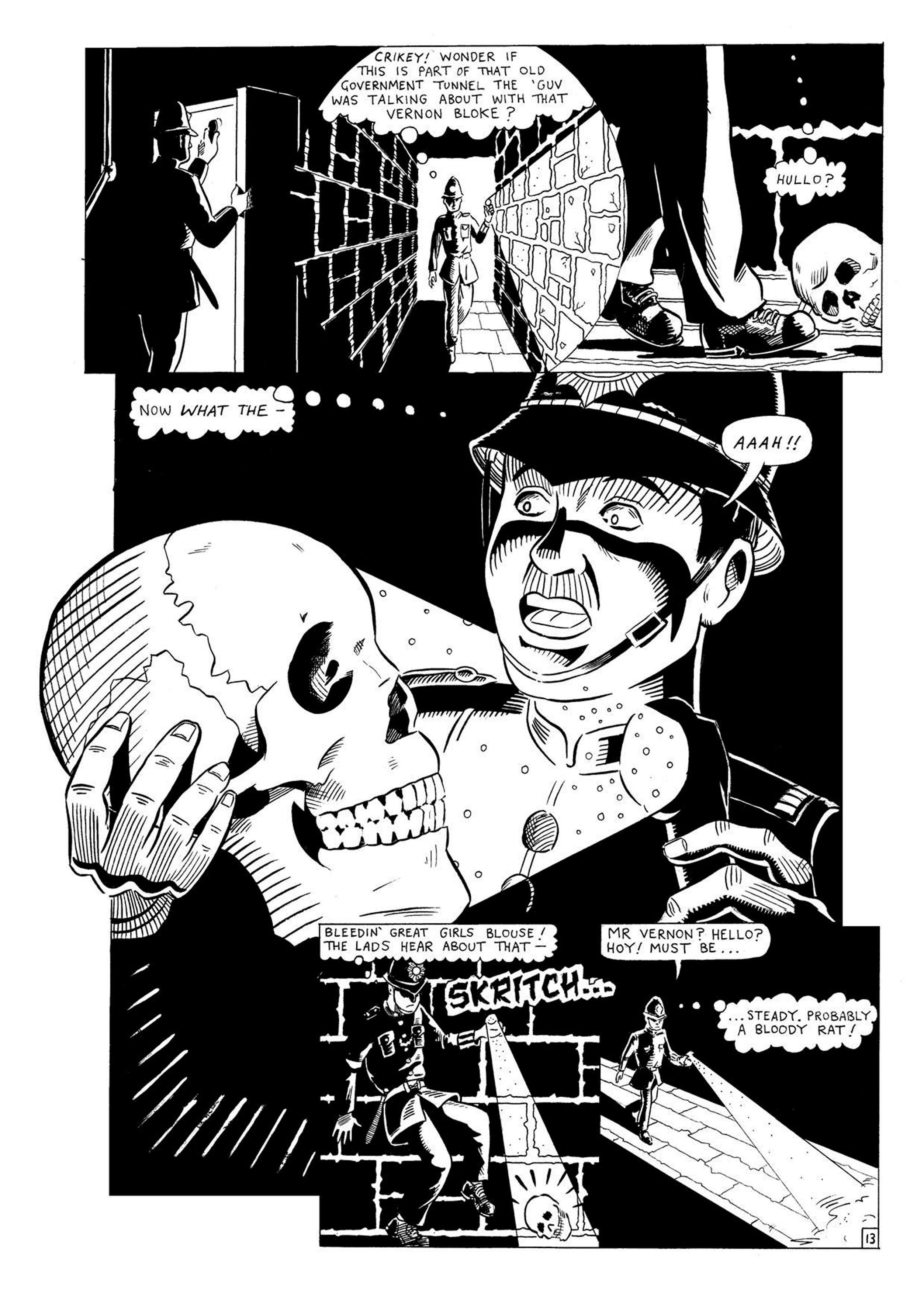

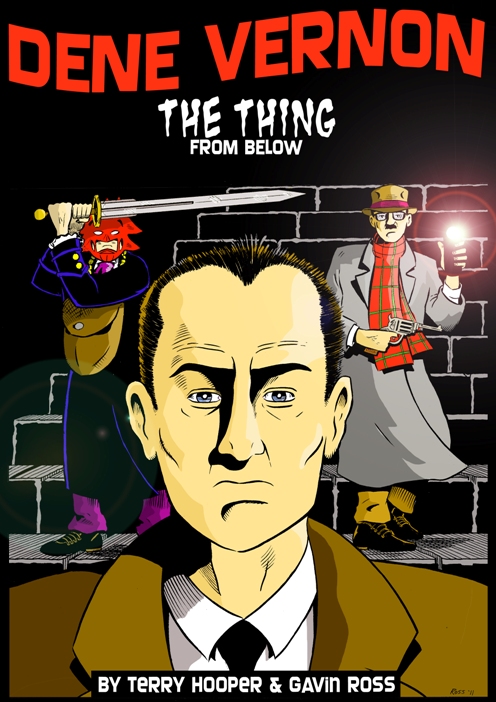
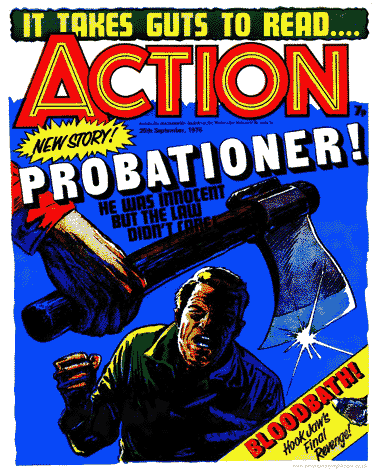

















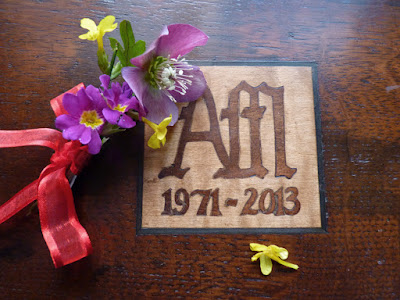









 JB: What about you?
JB: What about you?

My all-time favorite Ego story is “Ego the Loving Planet” from Marvel Adventures Avengers #12: http://www.comicvine.com/marvel-adventures-avengers-12-ego-the-loving-plane/4000-111416/
IIRC, Jeff Parker said that he wrote Ego’s dialogue in that issue with Billy Dee Williams in mind…
Especially paired with that Kurt Russell rumour… his current mustachioed face is very EGO